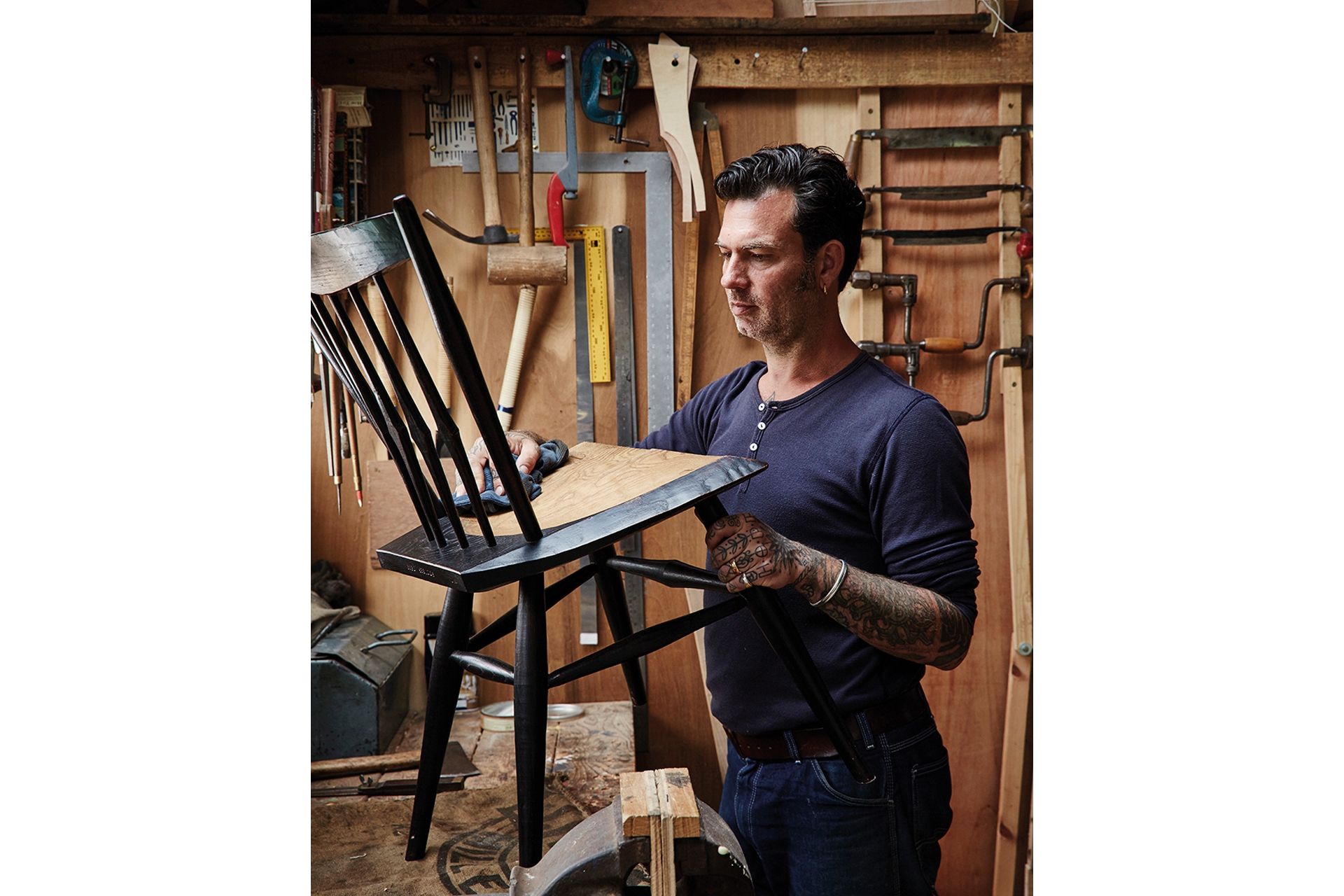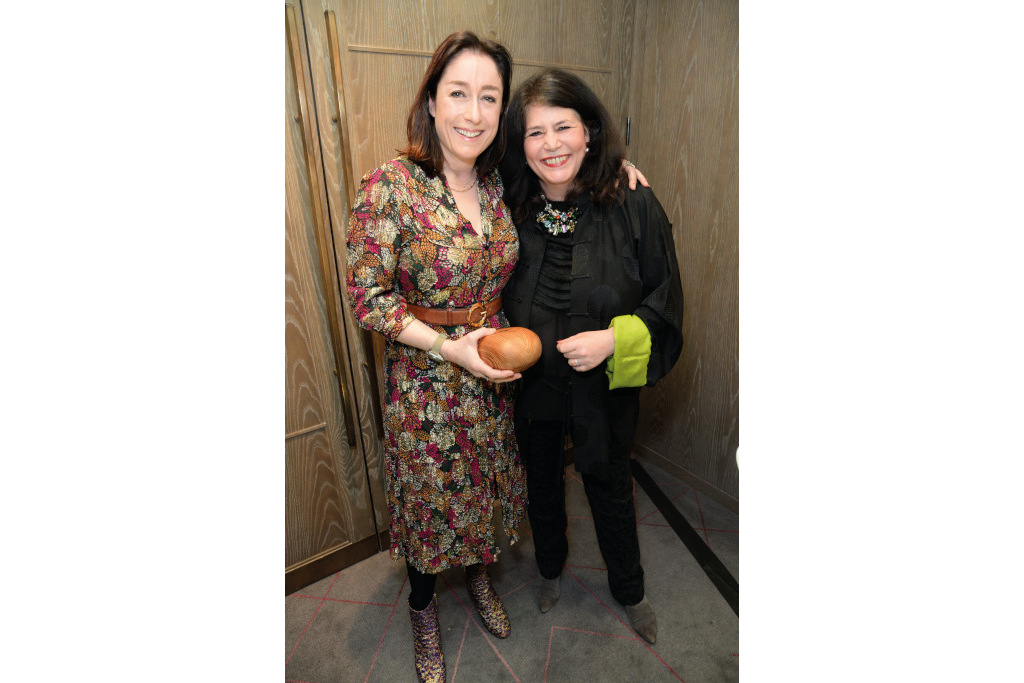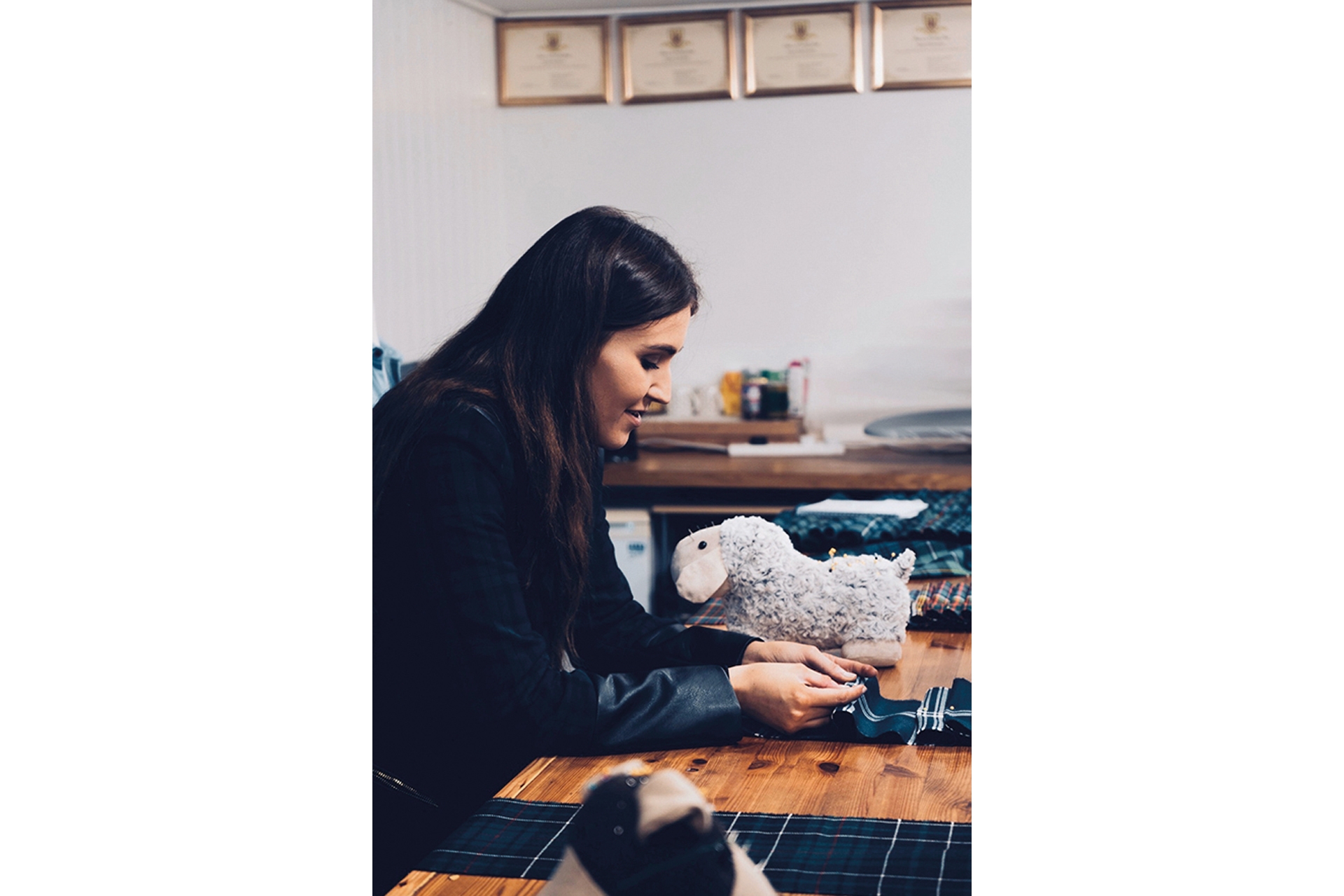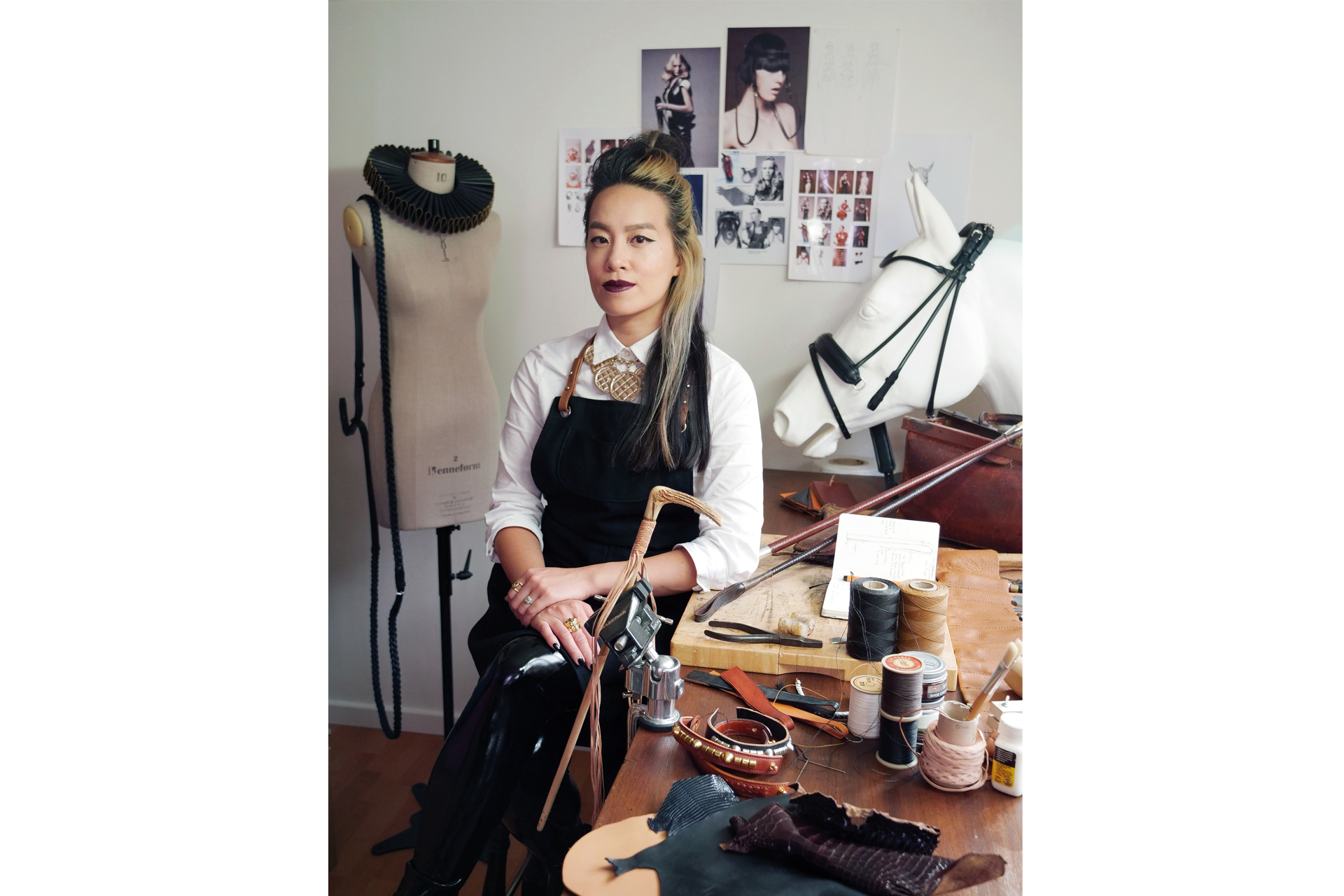The Artisans Bringing Back Endangered Crafts
By
3 years ago
Meet the makers reviving the artisanal craft scene

We all know about endangered species, but do we know enough about our endangered crafts? With over 50 on the critical list and some, like the making of traditional cricket balls, already extinct, Charlotte Metcalf issues a clarion call to resuscitate our crafts.
Saving Endangered Crafts

Jason Mosseri. Photo © Alun Callender
Scanning the Heritage Craft Association’s Red List of Endangered Crafts feels like watching a doom-laden documentary about our ailing planet. Just as animal and botanical species are dying out, reassuring symbols of Ye Olde England, like spades, clay pipes, clocks and bells, are also disappearing. Already four crafts, including making cricket balls and lacrosse sticks, are entirely extinct, while more than 130 are endangered, 56 critically. ‘The Red List is important to highlight the status of our heritage craft skills,’ says Deborah Pocock, formerly the Royal Warrant Holders Association’s Development Director, and since 2018, CEO of the Queen Elizabeth Scholarship Trust (QEST). The trust awards scholarships to makers seeking to expand their skillsets, allowing them to study at institutions or under craftsmen across the UK or abroad.
‘At the same time, there’s an explosion of all things craft,’ Deborah continues. ‘TV programmes like The Repair Shop, The Great Pottery Throw Down or The Great British Sewing Bee show there’s a surge in people interested in making. Online sites like Etsy and Folksy are inspiring creativity everywhere. The craft world’s getting the injection of new interest it needs and during Covid people discovered how much making contributes to our sense of wellbeing. Craft can sometimes be seen as a fusty hobby, but then we saw Tom Daley knitting through the Olympics and what could be cooler than that? The young are taking up the baton and that’s so exciting.’
Listen to Deborah Pocock on the Great British Brands podcast

Alexandra Llewellyn and Deborah Pocock at the Great British Brands Awards 2022
Deborah has just returned from Gordon Nicolson Kiltmakers (GNK) in Edinburgh, where she was visiting QEST scholar Emma Wilkinson. ‘Emma’s a young whirlwind, hellbent on making the kilt hip,’ she says. ‘GNK founded the Edinburgh Kiltmakers Academy in 2016 so young people can learn the craft, where Emma now also teaches and spearheads GNK’s social media. The beauty of a kilt is that it’s warm, adjustable and hand-stitched to last a lifetime.’ When I suggest they don’t all need to be tartan, it’s obvious I’m way behind the curve: ‘Emma’s already making them in gorgeous plain colours. She’s taking a functional, seemingly old-fashioned garment and reimagining it for her generation.’ Another example is Sussex-based Jason Mosseri giving a contemporary twist to traditional Windsor chairs. He used to be a celebrated Brighton-based tattooist but became ‘hooked on wood’ after attending a chairmaking course. He built a workshop, then travelled to America to learn more about the Windsor chair tradition. He revels in the glossary of chairmaking (froe, gutter adze, travisher, scorp, spoon bit, drawknife, snake coffin), passionate about keeping his craft alive, so much so that he now runs six-day courses in a woodland near his home.

Kiltmaker Emma Wilkinson
If the word ‘craft’ once conjured up a cosy hobby that involved poking around for beads, felt or crochet needles in dowdy haberdashery departments, it’s now rocketed out of its confines into a glittering hemisphere of art galleries and luxury brands. The enthusiastic crowds that descended on London Craft Week in May were as likely to be peeking into a Bentley, watching a top couturier embroider or sipping champagne while hearing about brands of the future at a five-star hotel, as learning to knit a beanie from recycled plastics.
Meanwhile, Wallpaper* described the Homo Faber Event at this year’s Venice Biennale, which was launched in 2018 by the Geneva-based Michelangelo Foundation for Creativity and Craftsmanship, as a ‘showcase of craftsmanship on steroids’. Several QEST scholars were represented there, including basketmaker Annemarie O’Sullivan who now makes contemporary woven objects of exquisite delicacy, and leatherworker Mary Wing To. Mary makes accessories for Chanel and is also a saddler and whipmaker (an endangered craft) and was a protegée of the Queen’s Master Saddler.
As a reflection of this growing recognition of makers’ creative talents, QEST encourages and supports makers transforming their traditionally useful wares into decorative luxury objects. ‘Craft is about function but nowadays also about beauty,’ says Deborah. She cites shoemaker Frances Pinnock, now making tantalisingly tactile sculptures from sole bend leather and Tom Vaughan, who trained as a cabinetmaker and is known for his futuristic S-bend chairs. From his London-based Object Studio, Tom has introduced metal into his woodwork and is making sculptures for delighted private clients. Tom is the son of renowned jeweller Charlotte de Syllas, a QEST scholar herself, who won the Goldsmiths’ Craft and Design Council’s 2020 Lifetime Achievement Award.

Leatherworker and saddler Mary Wing To
‘I love seeing knowledge passed down through the generations and it’s important that skills can be transformed into a viable business,’ says Deborah. ‘So, we award scholarships to those serious about stretching and evolving their craft. Take Leszek Sikon, who came from Poland and spent 15 years building a successful career in a major British supermarket, but missed working with his hands. Following a BA in Artist Blacksmithing at Hereford College of Arts, he set up Kingdom Forge in Suffolk where he makes the highest quality chef knives on the market, while running workshops to teach others.’ Leszek’s QEST Scholarship will send him to Japan to learn necessary smelting and forging techniques to make traditional Japanese tamahagane steel. Another scholar is glassblower Katherine Huskie, now incorporating neon into her work (neon making is another endangered craft). ‘She’s a great ambassador for craft,’ says Deborah. ‘When she exhibited at Collect 2022 at Somerset House, her dazzling wall sculpture wowed everyone. Katherine took the time to talk to a little girl who was as awed as if she were meeting Harry Styles. Katherine’s making craft the epitome of cool.’
The real hope for the survival of craft is that its range and application are enormous, and its appeal limitless. While it now lives happily in world-renowned museums and galleries and is redefining luxury, it’s also captivated the environmentally conscious, intent on making-do and-mending. A creator economy is springing up, full of young people offering all kinds of hand-crafted wares, from jewellery and knitwear to pottery and furniture. ‘It’s a matter of the next generation fully engaging with craft,’ says Deborah, ‘and momentum’s already building. If we can support our existing makers and pass on their commitment and enthusiasm, I’m very optimistic about the growing demand for the extraordinary things they are capable of.’
READ MORE
The Best Craft Kits for Adults / The Best at Home Crafts Courses



